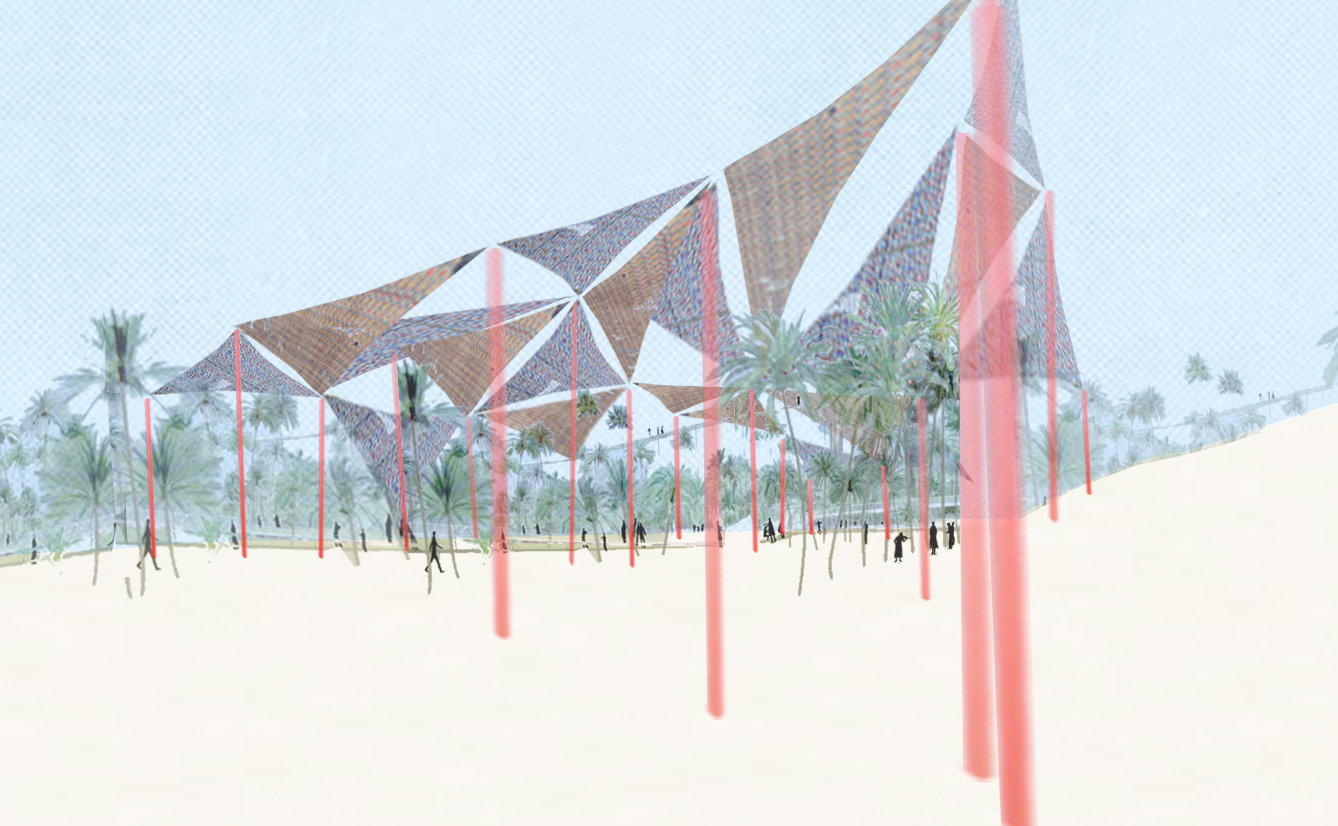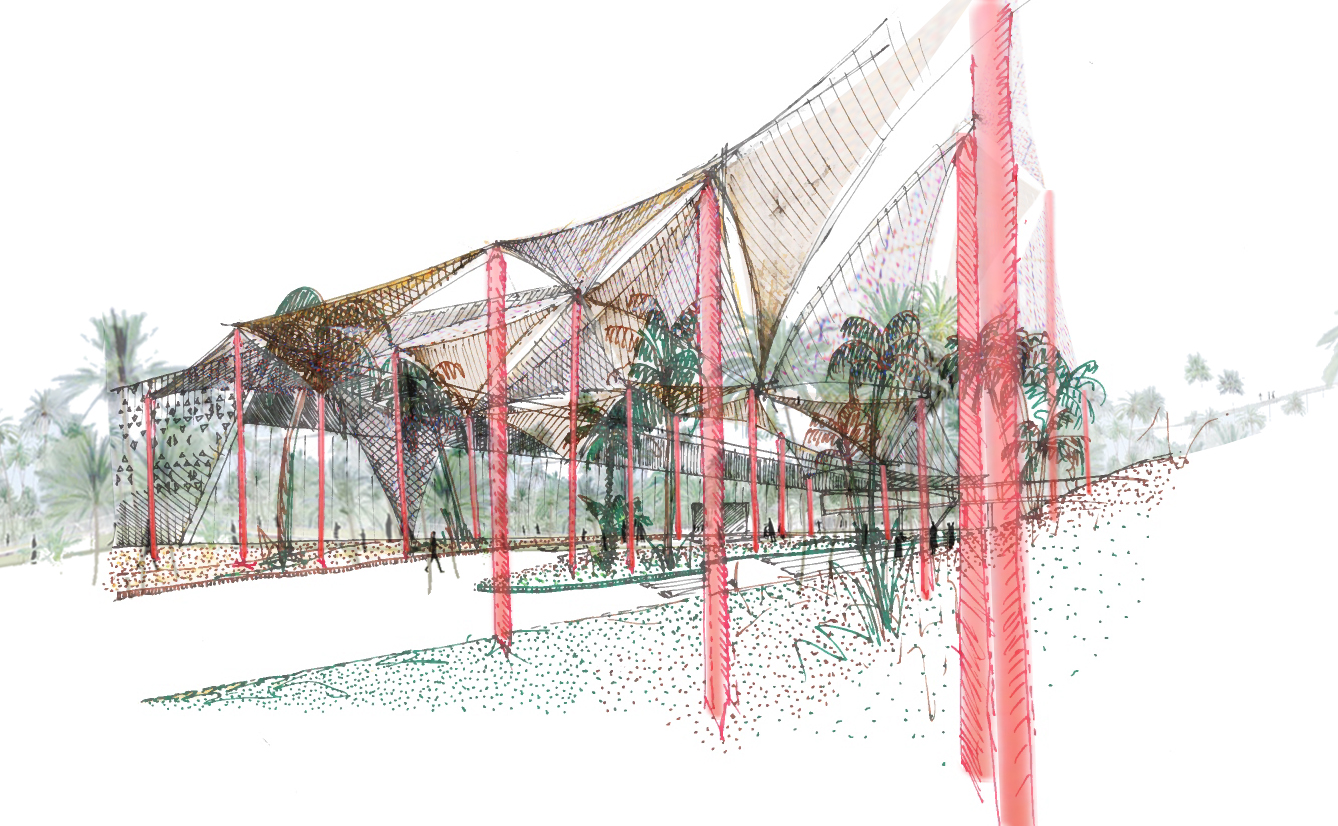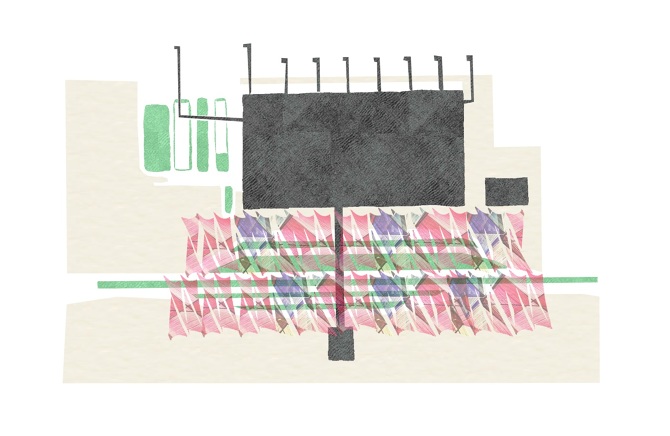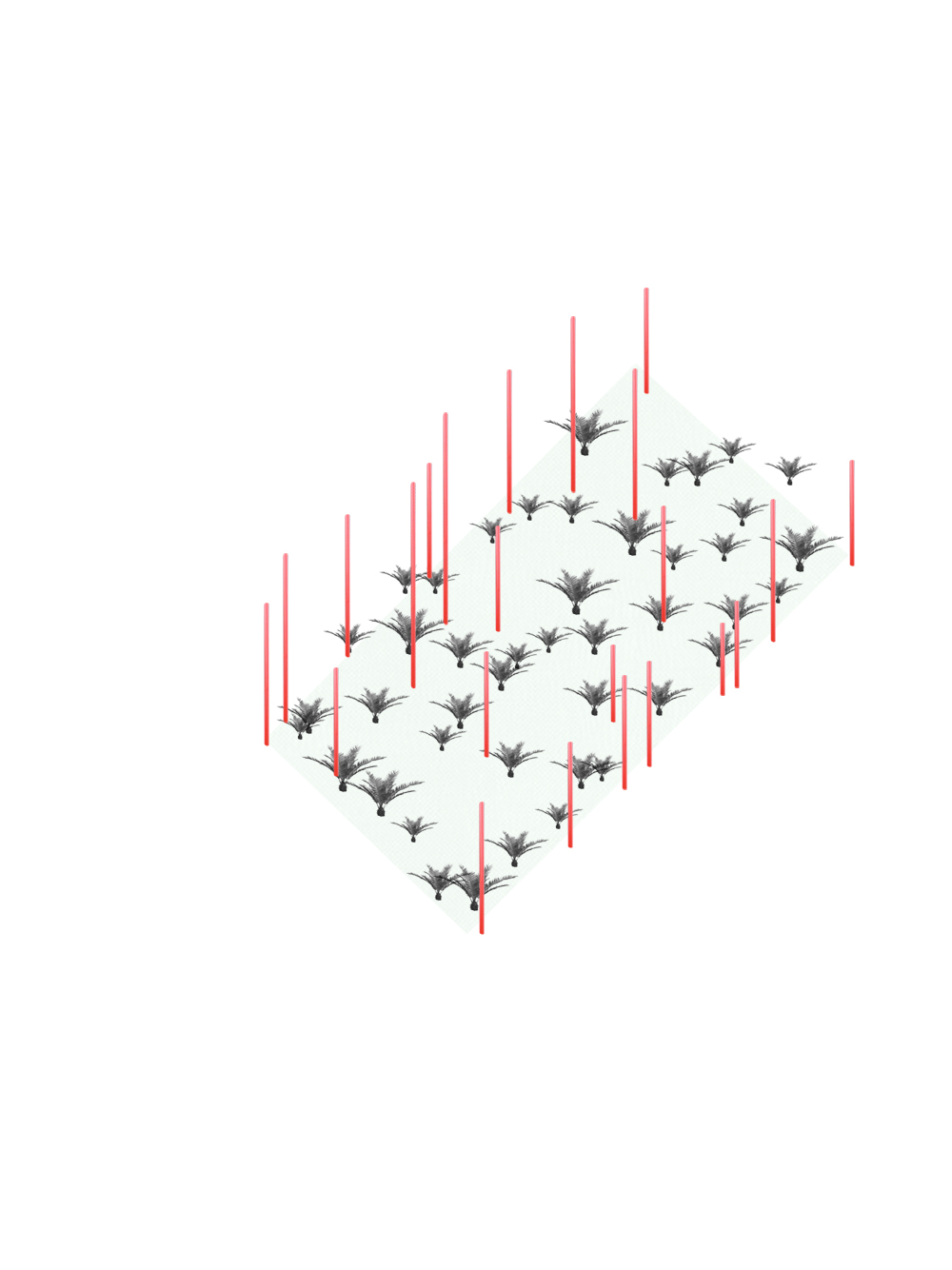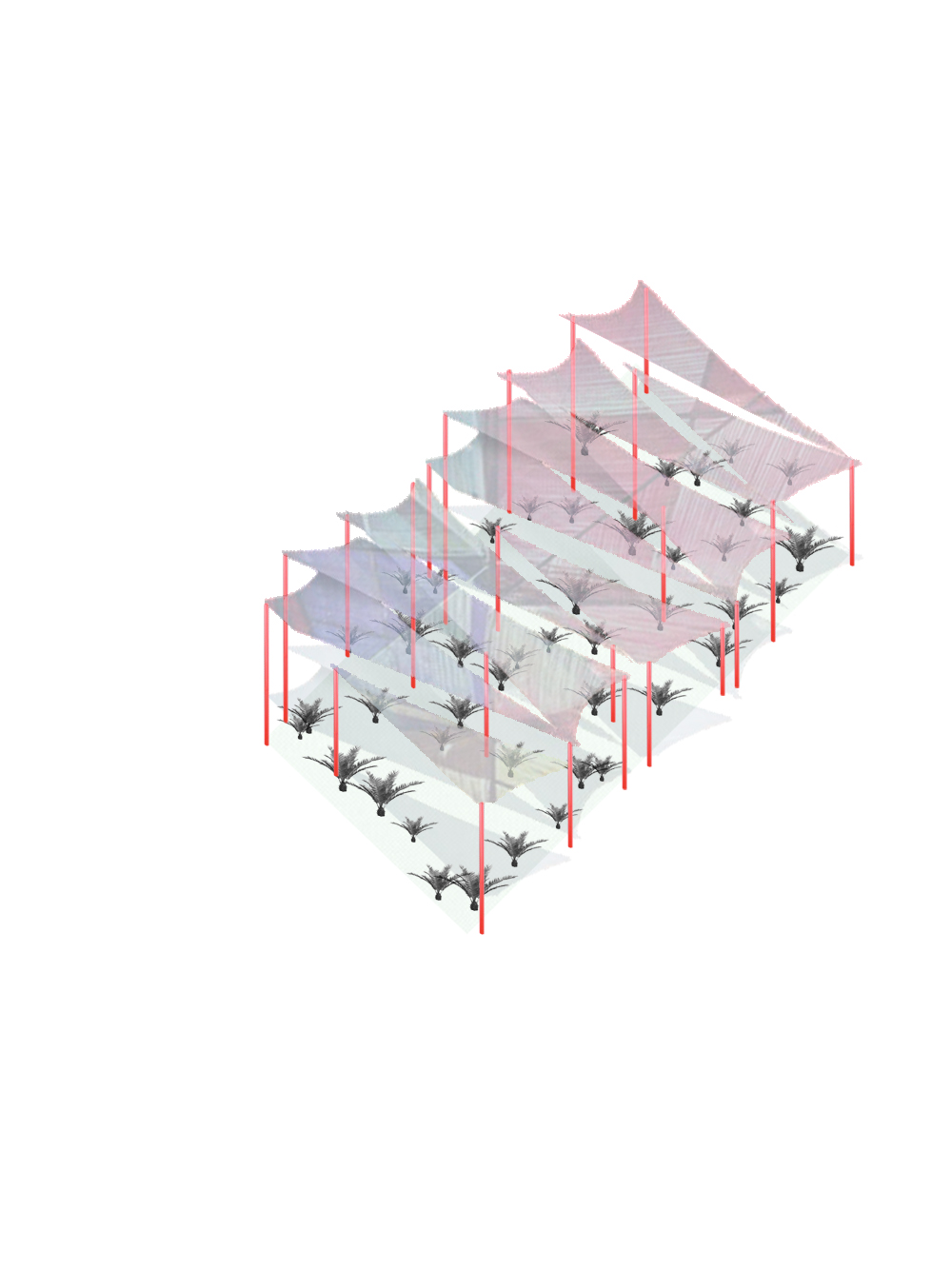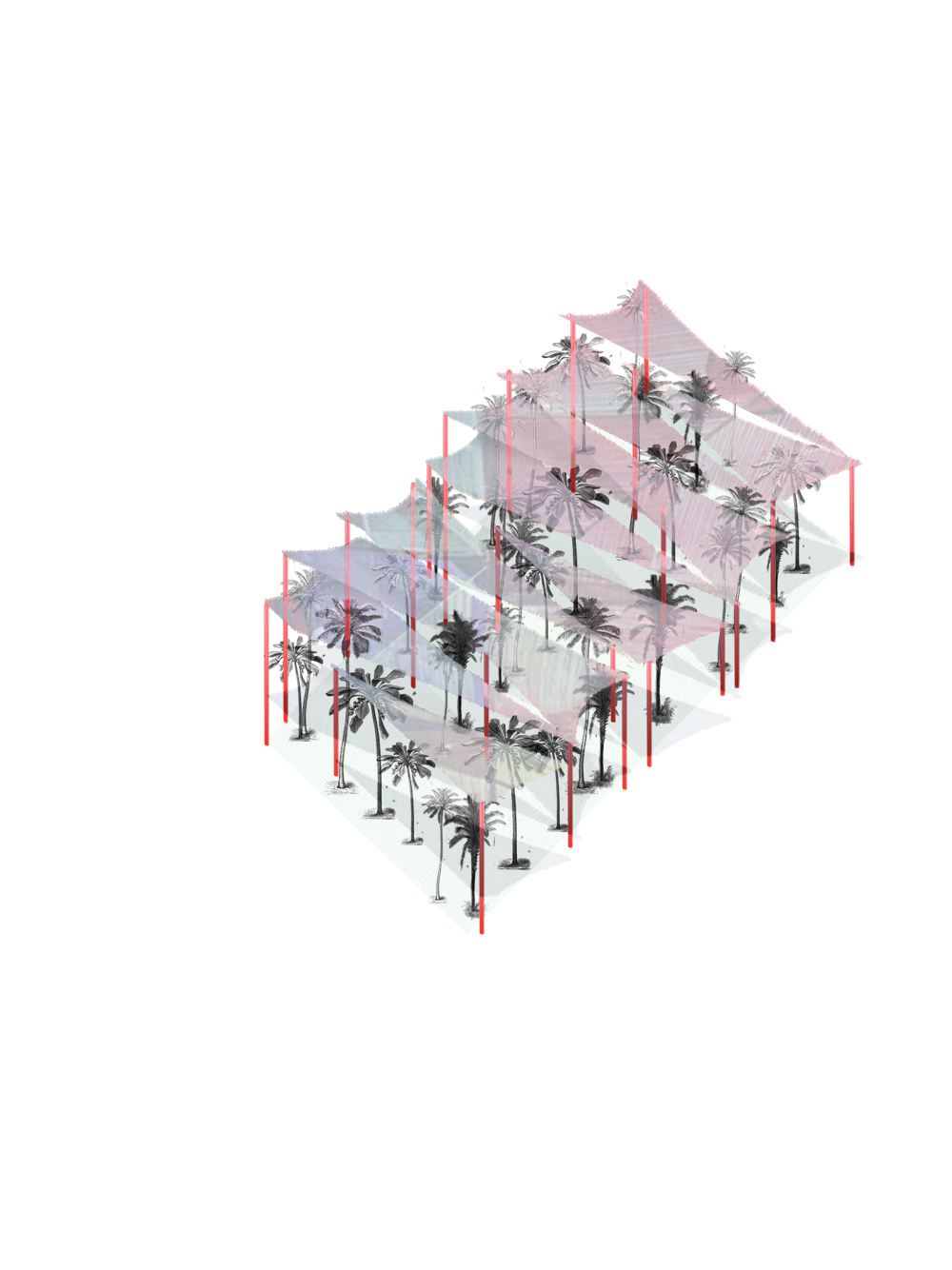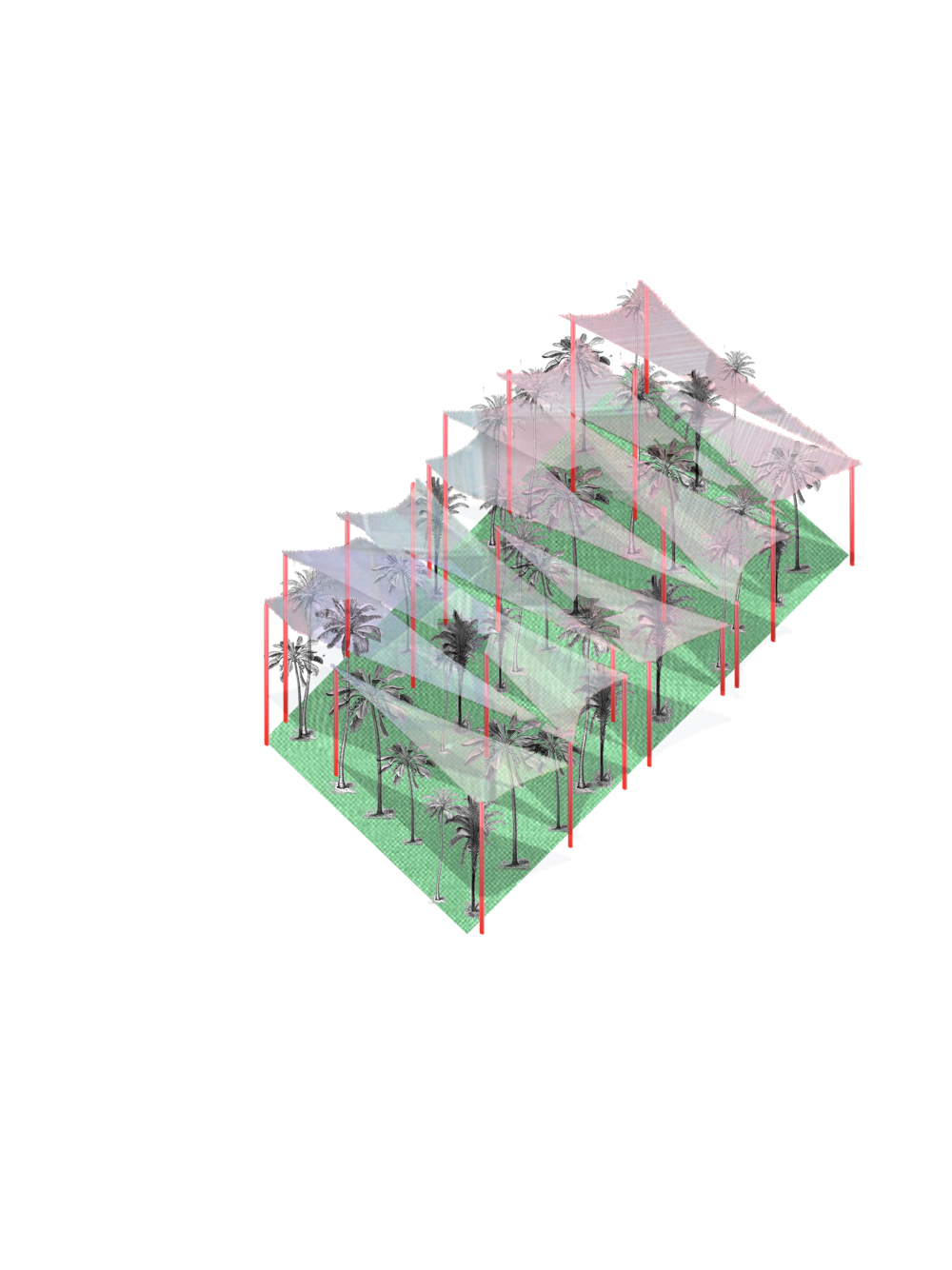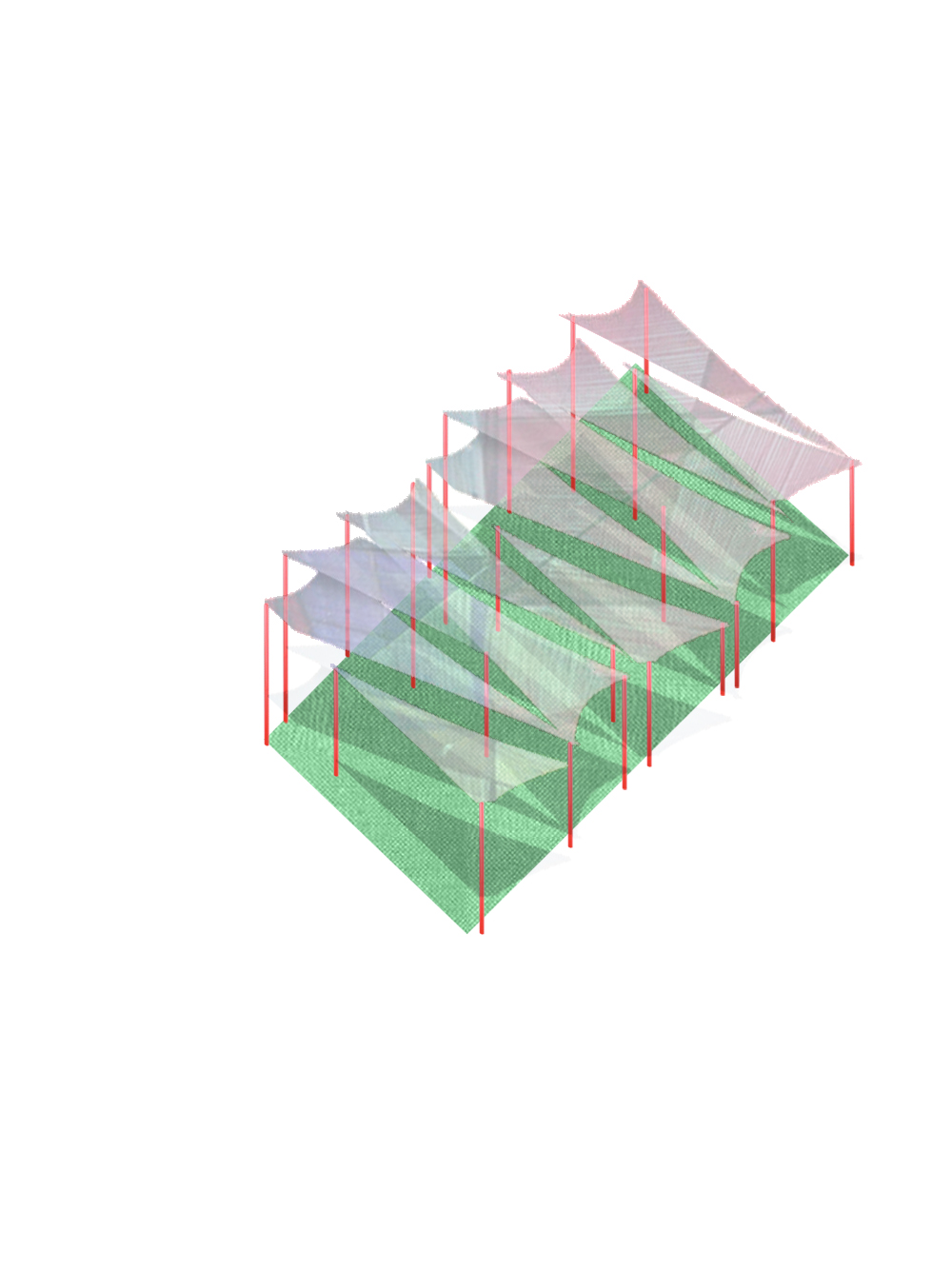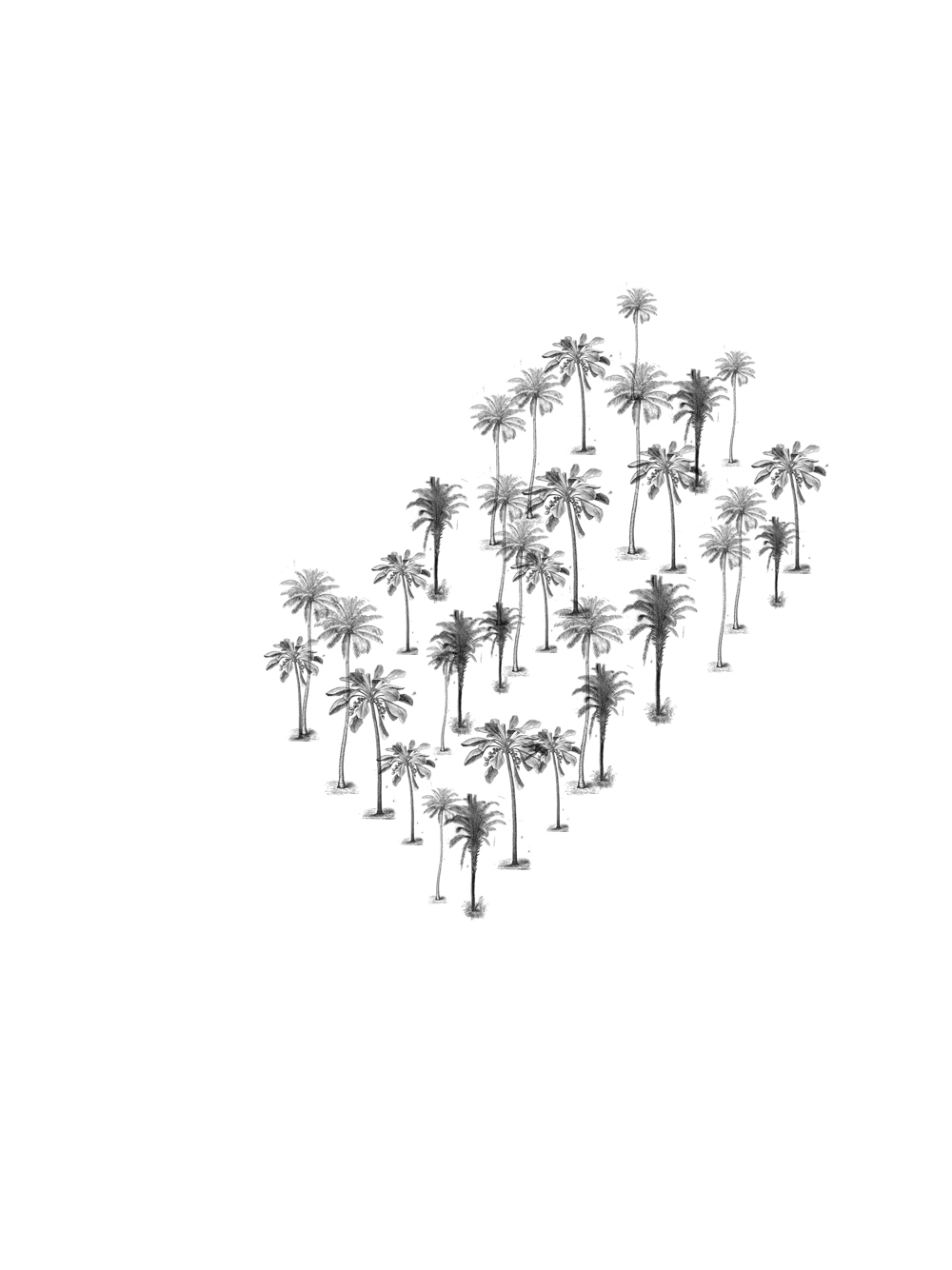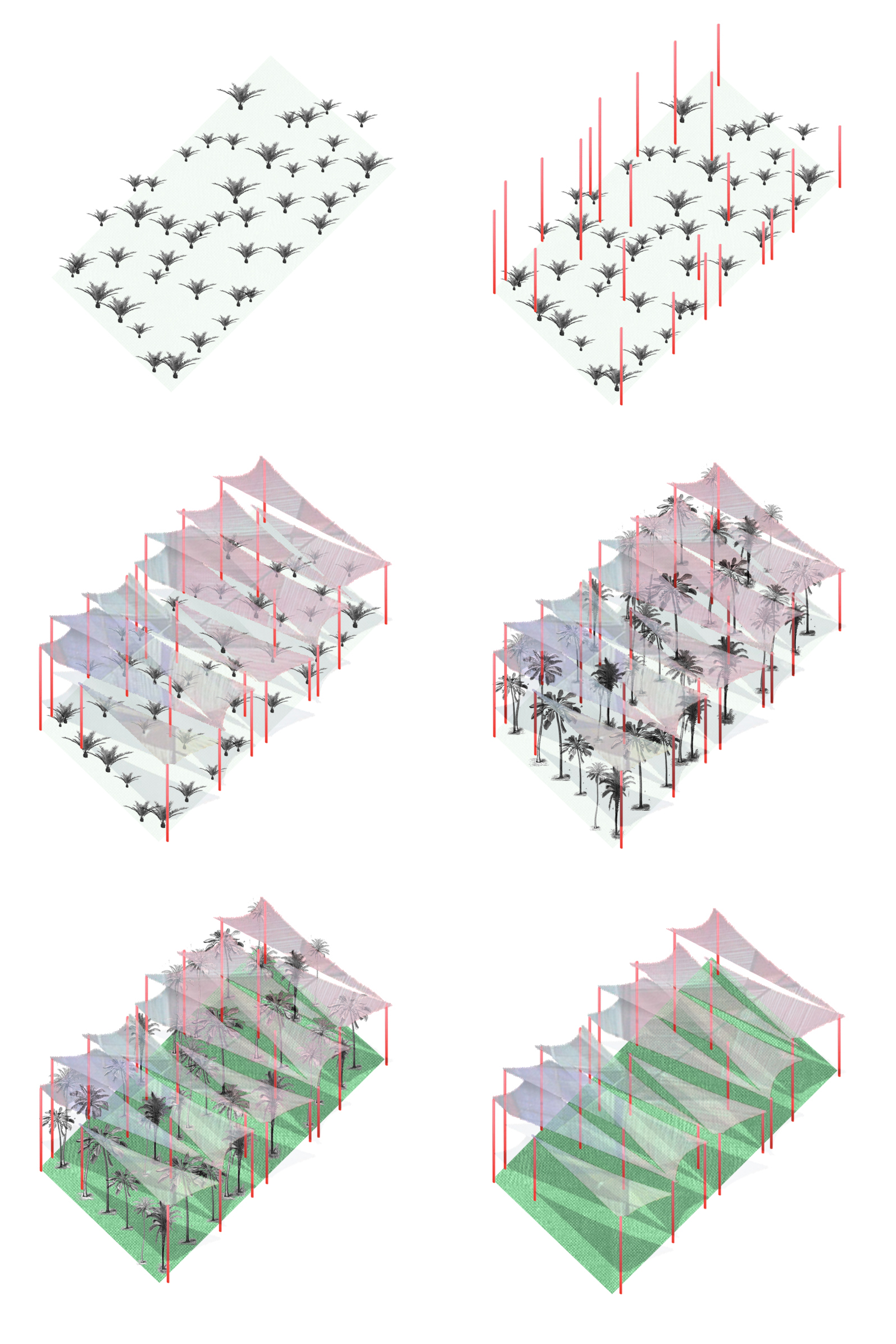1874-AIR-KWI.KW-2016
Client: Private
Status: Competition (2016)
Location: Kuwait, Kuwait
Climate: Desert / arid, Hot
Material: Vegetal
Environment: Desert
Visualizer: Studio
Scale: 40.000 ㎡ Large
Types: Intervention, Landscape
Designing a landscape in a desert climate presents a series of challenges, the most serious of which is how to protect visitors and plants from the burning sun. Offering a place for relaxation and leisure, the landscape also needed to be energy efficient and sustainable in its use of irrigation. Many existing public spaces in the Arabian Gulf evoke European parks, covering the desert with a blanket of grass and flowers. However, counteracting evaporation requires a significant amount of desalinated water, which has to be produced industrially from salty sea water through a costly process.
This burning of fossil fuels emits CO2, which in turn accelerates climate change that could give way to more heat waves, sandstorms and rising sea levels, putting Kuwait’s future prosperity in risk. Historically, people living in such intense heat have grown plants and built water irrigation channels in the shade of palm trees to dilute the strength of the sun’s rays and avoid excessive evaporation.
Therefore, we have developed a scheme revealing partially-shaded planted spaces below a textile multi-layered surface. The project evolves as a series of triangular sails raised on slim metal columns and forming a soft, sheltering sky across the site. Young palms can be planted below, converting the landscape into an ephemeral tree nursery during the first years. As these gradually grow, the translucent canopy of partial shade will allow a lush garden to emerge, protected from the harsh excess of the desert sun.
This landscape then becomes an oasis of plants and trees, forming a series of interconnected public spaces. At this point, the textiles and poles can be removed and re-used in another area of the airport grounds or the city, where this ecologically virtuous cycle will begin again (and again). The high shaded gardens are conceived as a place for visitors and travelers to gather and rest before or after their journey, as well as a place for events and festivals celebrating local culture and the experience of flight.
Visitors will find play spaces, pools and streams, as well as date palms and vegetable gardens. By creating partial shade for the planting, the canopy aims to reduce the amount of water lost to evaporation, and so will improve the park’s efficiency and sustainability. Whilst providing shade in the daytime, the elevated textiles also act as a network of social and meeting places in the cooler evening hours.
